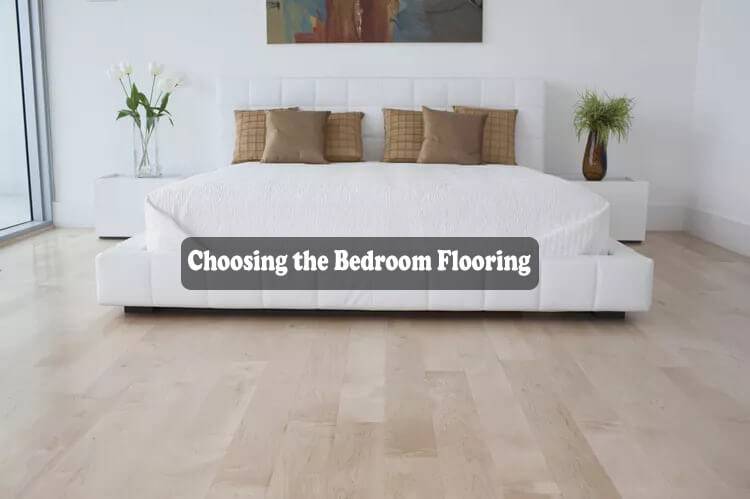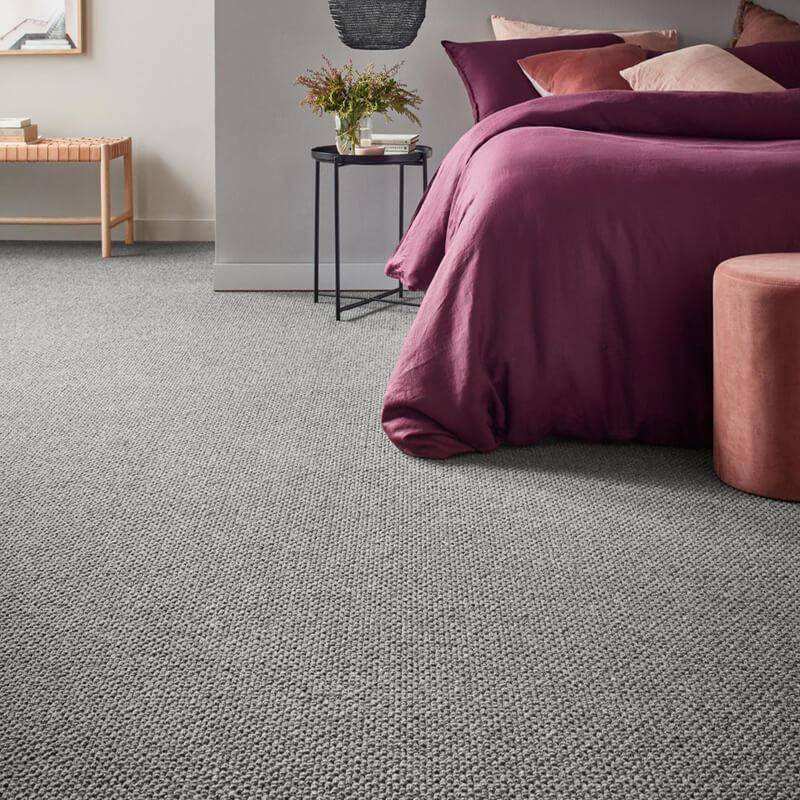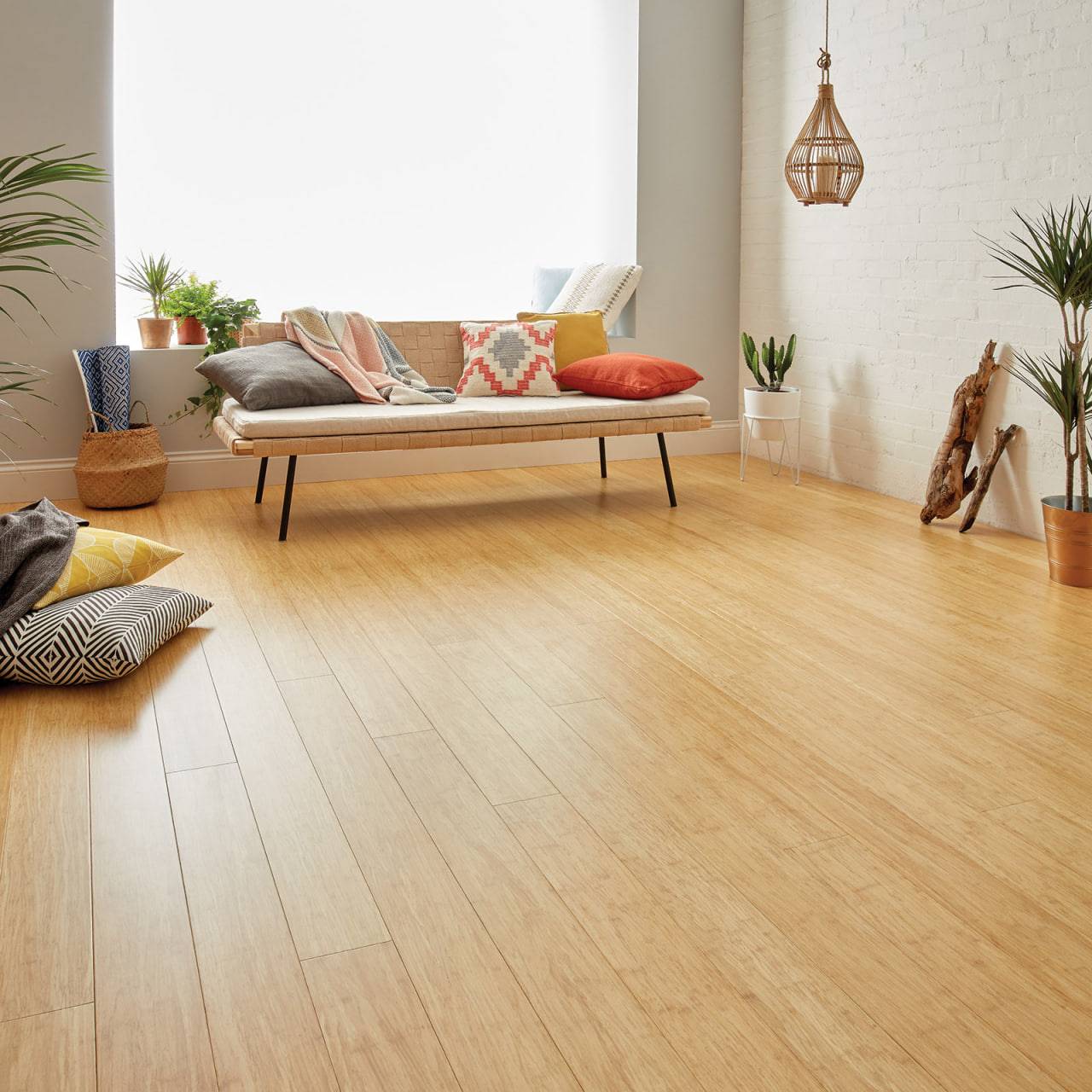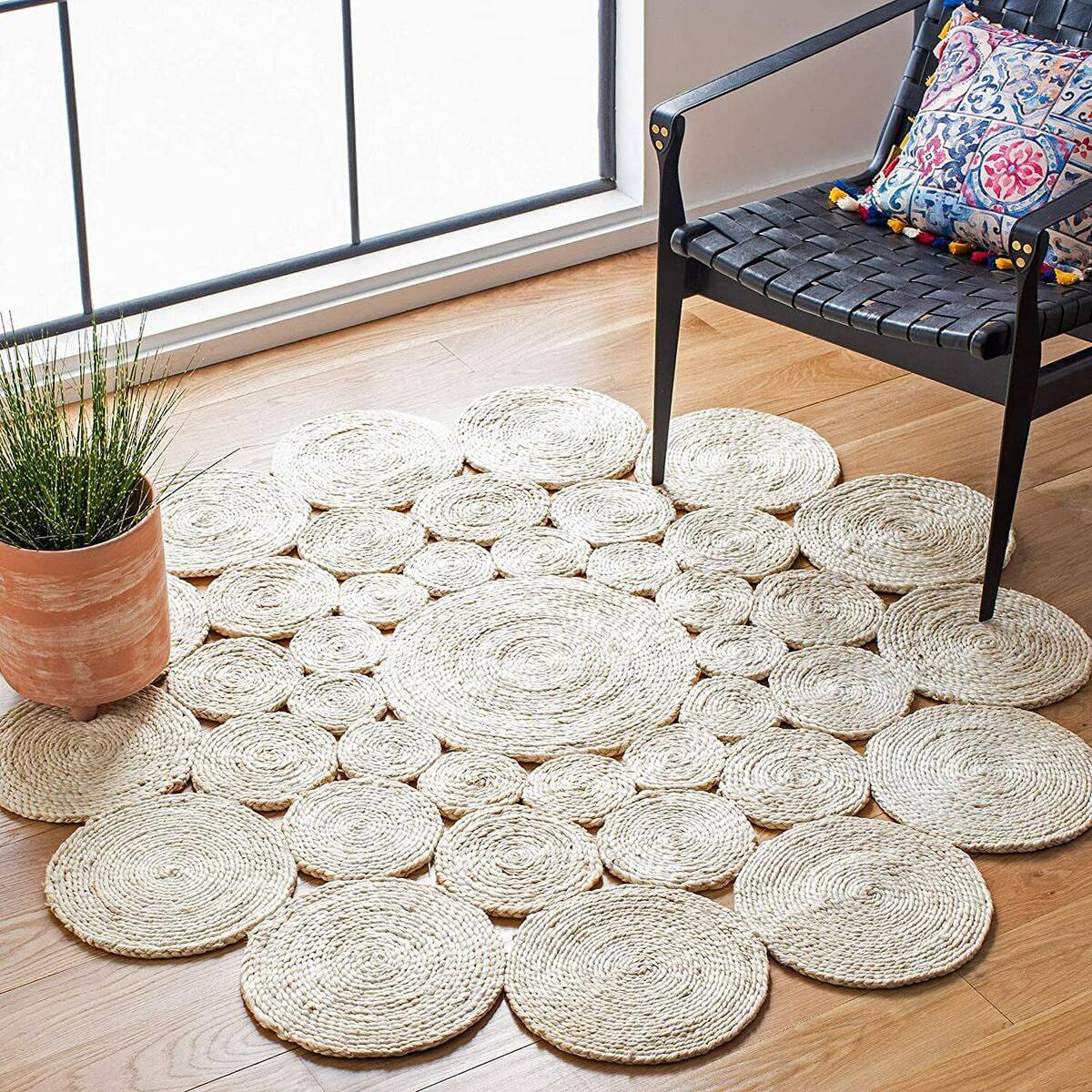Your bedroom floor is more than just a surface – it’s an experience. It’s the welcoming touch to your bare feet each morning and a plush comfort at the end of a long day. But with so many options available, choosing the right bedroom flooring can feel overwhelming.
This guide dives into 8 popular flooring choices, considering not just aesthetics but comfort, durability, maintenance, and even environmental impact. We’ll explore whether you prioritize cozy comfort, sleek style, or eco-friendly materials. We’ll also address factors like age of occupants and resale value to ensure your new floor complements your lifestyle and long-term plans.
By the end of this journey, you’ll be ready to step confidently into the perfect bedroom flooring for you.
The Cozy Comfort of Carpet: Pros and Cons
Carpet remains a popular bedroom flooring choice in North America, and for good reason. It offers undeniable comfort underfoot, that luxurious plushness that welcomes bare feet in the morning and provides warmth on chilly nights.
Beyond aesthetics, carpet dampens sound, creating a quieter and more serene sleeping environment. However, it’s important to consider the trade-offs.
Cost: While carpet offers a range of price points, the most luxurious plush carpets can indeed be more expensive than other flooring options. Budget-conscious options include choosing synthetic fibers like nylon over wool, or exploring remnant sales at carpet warehouses.
Types:
- Cut Pile: This is where the fiber loops are cut, creating a soft and smooth texture. Popular variations for bedrooms include Saxony (plush and luxurious), textured (casual with good dirt resistance), and frieze (twisted fibers for a more casual look).
- Loop Pile: Here, the loops remain uncut. Berber and level loop are the main types. While less common in bedrooms, they offer good durability.
Maintenance: A major downside of carpet is cleaning difficulty, especially with high piles. They tend to trap dust, dirt, and allergens, which can worsen allergies and impact indoor air quality. This is a key consideration when comparing carpet to, say, hardwood floors.
Environmental Impact: Carpet isn’t the most eco-friendly choice. Production can involve off-gassing of chemicals, and disposal presents a challenge as it takes a long time to biodegrade in landfills.
The Verdict: Carpet offers undeniable comfort and warmth, but comes with drawbacks in terms of cleaning, allergies, and environmental impact. Weigh these factors against your priorities for a bedroom floor.
The Allure of : Beauty, Durability, and Resale Value
Hardwood flooring stands as a classic and perennially popular choice for bedrooms, and for good reason. Its natural beauty adds warmth and elegance to any space, making it a favorite among design professionals and realtors alike. Here’s a breakdown of its pros and cons:
Pros:
- Warmth and Beauty: Hardwood offers undeniable aesthetic appeal, creating a timeless and sophisticated atmosphere in the bedroom.
- Durability and Longevity: With proper care, hardwood floors can last for decades, making them a worthwhile investment.
- Environmentally Friendly: Solid hardwood is a natural and biodegradable material, making it a more eco-conscious choice compared to some alternatives.
- Resale Value: Hardwood floors are considered a desirable feature by homebuyers, potentially increasing your home’s resale value.
Cons:
- Cost: Genuine hardwood is one of the more expensive flooring options for bedrooms.
- Maintenance: While relatively easy to clean, hardwood can scratch and may require refinishing over time.
- Sound: Solid hardwood can creak, which might be a concern for those seeking a silent sleep environment.
Cost-Effective Alternatives:
- Refinishing: If your home already has existing hardwood, consider refinishing it for a renewed look at a fraction of the cost of installing new floors.
- Engineered Wood: Engineered wood offers a more budget-friendly option that maintains the beauty of hardwood with a more stable core, reducing warping and bowing. However, its durability depends on the quality of the top wear layer.
The Verdict:
Hardwood flooring provides a timeless aesthetic, excellent durability, and potential resale value. While it comes with a higher price tag, its long lifespan and eco-friendly nature can make it a worthwhile investment. If budget or noise reduction are key concerns, explore refinishing existing hardwood or consider engineered wood options.
Sustainable Style: Exploring Bamboo Flooring
Often mistaken for hardwood due to its similar look and installation process, bamboo flooring offers a unique twist. Made from a rapidly renewable grass, bamboo boasts several advantages:
- Eco-Friendly: As bamboo matures quickly, it’s a highly sustainable resource compared to slow-growing hardwoods.
- Durability: Bamboo flooring is surprisingly tough, exceeding the hardness of most hardwoods, making it ideal for bedrooms with moderate foot traffic.
- Cost-Effective: While not the cheapest option, bamboo falls within the mid-range for flooring materials, comparable to mid-tier hardwood.
Matching Your Style:
Similar to hardwood and laminate, bamboo comes in planks and strips that seamlessly interlock. The variety of grain patterns and color options ensures you can find a look that complements your bedroom design.
Considerations:
- Maintenance: While generally easy to care for, bamboo requires regular cleaning to maintain its beauty.
- Moisture Sensitivity: Excessive moisture can damage bamboo flooring, so it’s not ideal for areas prone to spills or humidity.
The Verdict:
Bamboo flooring presents a compelling choice for the eco-conscious homeowner seeking a stylish and durable floor. Its affordability and ease of installation add to its appeal. However, keep in mind its susceptibility to moisture damage and the need for regular cleaning.
Stepping into Comfort: Exploring Cork Flooring
Cork flooring, often seen in kitchens for its comfort underfoot, also offers unique benefits for bedrooms.
Comfort and Quiet:
- Plush Feel: Cork’s natural resilience provides a soft and comfortable surface underfoot, ideal for barefoot mornings.
- Sound Insulation: The cellular structure of cork dampens sound, creating a quieter and more peaceful sleep environment.
Durability and Sustainability:
- Resilient: Cork naturally bounces back from minor indentations, but heavy furniture can leave permanent marks.
- Eco-Friendly: Harvested from the bark of cork oak trees, cork is a renewable and sustainable resource.
Considerations:
- Cost: Cork flooring can be more expensive than some other options.
- Maintenance: While relatively easy to clean, cork requires regular sweeping and occasional specific cleaning products to maintain its look.
- Moisture Sensitivity: Excessive moisture can damage cork flooring, so it’s not ideal for bathrooms or spill-prone areas.
The Verdict:
Cork flooring offers a unique combination of comfort, soundproofing, and eco-friendliness. While its price tag might be higher, its resilience and longevity can make it a worthwhile investment for a bedroom floor. However, be mindful of its susceptibility to moisture and potential for indentation from heavy furniture.
Affordable Versatility: Exploring Vinyl Flooring
Vinyl flooring remains a popular choice for bedrooms thanks to its affordability and versatility. Here’s a breakdown of its pros and cons:
Pros:
- Cost-Effective: Vinyl is one of the most budget-friendly flooring options on the market.
- Durability: Resistant to stains, rips, tears, and moisture, vinyl offers good durability for bedrooms.
- Variety: Vinyl comes in a vast array of patterns, colors, and styles, even mimicking the look of natural materials like wood and stone.
- Easy Installation: Vinyl flooring comes in sheets, tiles, or luxury vinyl planks (LVF) with tongue-and-groove mechanisms for easy installation, even for DIY enthusiasts.
- Water Resistance: Vinyl is a good choice for bedrooms with en suite bathrooms or potential for spills due to its water-resistant properties.
Cons:
- Comfort: Basic sheet or vinyl tile can feel hard and cold underfoot. Adding an underlayment can improve comfort but increases cost.
- Environmental Impact: Vinyl is a petroleum-based product and can emit VOCs (volatile organic compounds) during installation, potentially impacting indoor air quality. Additionally, it cannot be recycled.
- Resale Value: While durable, vinyl flooring may not add significant value to your home compared to some other options.
Luxury Vinyl Flooring (LVF):
LVF offers a thicker, more comfortable alternative to traditional vinyl with a click-lock installation system. While more expensive than basic vinyl, LVF planks resemble hardwood and can enhance your home’s resale value.
The Verdict:
Vinyl flooring offers an attractive combination of affordability, durability, and style. However, its potential impact on indoor air quality and lack of eco-friendliness should be considered. Luxury vinyl planks address some comfort concerns and may offer better resale value, but come at a higher price point.
The Eco-Conscious Choice: Linoleum Flooring
Linoleum, once a dominant player in floor coverings, is experiencing a resurgence thanks to its eco-friendly properties. Here’s how it stacks up as a bedroom flooring option:
Pros:
- Environmentally Friendly: Made from natural ingredients like linseed oil, cork, and wood flour, linoleum is a biodegradable and recyclable option, making it a great choice for the environmentally conscious homeowner.
- Durable: Linoleum offers excellent durability, lasting up to 40 years with proper care.
- Stain and Scratch Resistant: Similar to vinyl, linoleum resists stains and scratches, making it ideal for bedrooms.
- Easy Maintenance: Regular sweeping and mopping are all that’s required to keep linoleum floors looking their best.
Cons:
- Cost: Slightly more expensive than most vinyl flooring options.
- Design Options: While improving, linoleum may offer a narrower range of patterns and colors compared to vinyl.
- Comfort: Linoleum can feel slightly hard underfoot. A padded underlayment is recommended for bedrooms to enhance comfort, adding to the installation cost.
- Moisture Sensitivity: Linoleum is not as water-resistant as vinyl and can be susceptible to indentation from heavy furniture. The oils in the material can also yellow with direct sunlight exposure.
- Slipperiness: When wet, linoleum can be slippery, so be cautious in areas prone to spills.
The Verdict:
Linoleum offers a compelling choice for the eco-conscious homeowner seeking a durable and easy-to-maintain floor. However, its slightly higher cost, limited design options, and potential for moisture sensitivity and indentations are factors to consider. A padded underlayment is recommended for improved comfort but adds to the installation expense. If these drawbacks are not dealbreakers, linoleum can be a beautiful and sustainable addition to your bedroom.
The Look of Luxury Without the Price Tag: Flooring
Laminate flooring offers a budget-friendly way to achieve a high-end look in your bedroom. Let’s explore its strengths and weaknesses:
Pros:
- Affordability: Laminate is a significantly cheaper alternative to hardwood, tile, or luxury vinyl flooring, making it an attractive option for cost-conscious homeowners.
- Easy Installation: Laminate planks typically click together, making DIY installation a manageable weekend project.
- Versatility: With a printed design layer, laminate can mimic the look of various materials like wood, stone, or even metal, offering a wide range of design possibilities.
Cons:
- Comfort and Sound: Laminate can feel hard and cold underfoot, and due to its lack of insulation, it can be noisy when walked on. A good quality underlayment can help dampen sound somewhat, but won’t eliminate it completely. If soundproofing is a major concern, laminate may not be the best choice.
- Durability: While scratch-resistant to an extent, laminate can be susceptible to permanent damage from scratches and dents. Water exposure can also cause buckling, and repairs are difficult. The lifespan of laminate flooring depends on the quality of the wear layer.
The Verdict:
Laminate is a budget-friendly option that offers a stylish look for your bedroom. However, keep in mind its potential drawbacks in terms of comfort, sound, and durability. If these factors are not dealbreakers, laminate can be a good choice for a low-traffic bedroom. For areas with higher traffic or where soundproofing is crucial, consider alternative flooring options.
The Finishing Touch: Area Rugs for Bedrooms
Area rugs aren’t technically flooring, but they play a vital role in defining the comfort, style, and functionality of your bedroom floor. Here’s why you might consider incorporating one:
Softness and Warmth: Area rugs add a layer of plush comfort underfoot, particularly on hard surface floors like wood or laminate.
Style and Design: Rugs offer a wealth of design possibilities. They come in a vast array of sizes, colors, patterns, weaves, and materials, allowing you to personalize your bedroom’s aesthetic and complement your existing décor.
Versatility and Affordability: Rugs are relatively inexpensive compared to wall-to-wall carpeting, and they’re easy to swap out for a fresh look. You can even take them with you when you move.
Functionality:
- Noise Reduction: Area rugs can help dampen noise in your bedroom.
- Defining Space: A strategically placed rug can visually define areas within your bedroom, such as a seating area or a reading nook.
Choosing the Right Rug:
- Comfort: Select a rug with a soft and cozy feel underfoot.
- Safety: Opt for a rug with a non-slip backing or add a separate non-slip pad for safety.
- Size: A rug placed under the bed should extend at least two feet on all sides. Smaller rugs at the bed’s base or sides should fill most of the designated space.
- Quality: While budget is a consideration, higher quality rugs tend to last longer, look and feel better, and shed less than cheaper options.
The Verdict:
Area rugs are an excellent way to add comfort, style, and functionality to your bedroom floor. They offer a budget-friendly way to personalize your space and enhance its overall look and feel.
The Durable Choice: Exploring Rubber Flooring
Rubber flooring offers a unique combination of durability, safety, and eco-friendliness, making it a strong contender for bedrooms, especially children’s rooms or play areas. Here’s a breakdown of its pros and cons:
Pros:
- Durability: Rubber flooring is exceptionally durable, lasting for over 30 years with proper care. It can withstand heavy wear and tear, making it ideal for high-traffic areas or children’s rooms.
- Safety: Slip-resistant and shock-absorbent, rubber flooring provides a safe surface for children to play on.
- Easy Maintenance: Rubber floors are easy to clean and maintain, requiring regular sweeping and occasional mopping.
- Fire Resistant: Rubber is fire-resistant and non-toxic when burned, offering an extra layer of safety.
- Eco-Friendly: Rubber flooring can be made from either virgin or recycled rubber. Virgin rubber comes from renewable rubber sap, while recycled rubber utilizes old tires, diverting them from landfills.
Cons:
- Comfort: Rubber flooring can feel hard and cold underfoot, especially in colder climates. Area rugs can add a layer of comfort.
- Cost: Rubber flooring can be more expensive than some other options like vinyl or laminate.
- Limited Design Options: While available in various colors and styles, rubber flooring may offer a more limited selection compared to other materials.
The Verdict:
Rubber flooring stands out for its exceptional durability, safety features, and eco-friendly properties. This makes it a great choice for high-traffic areas or children’s bedrooms. However, keep in mind its potential drawbacks in terms of comfort and cost, and the limited design options available.









